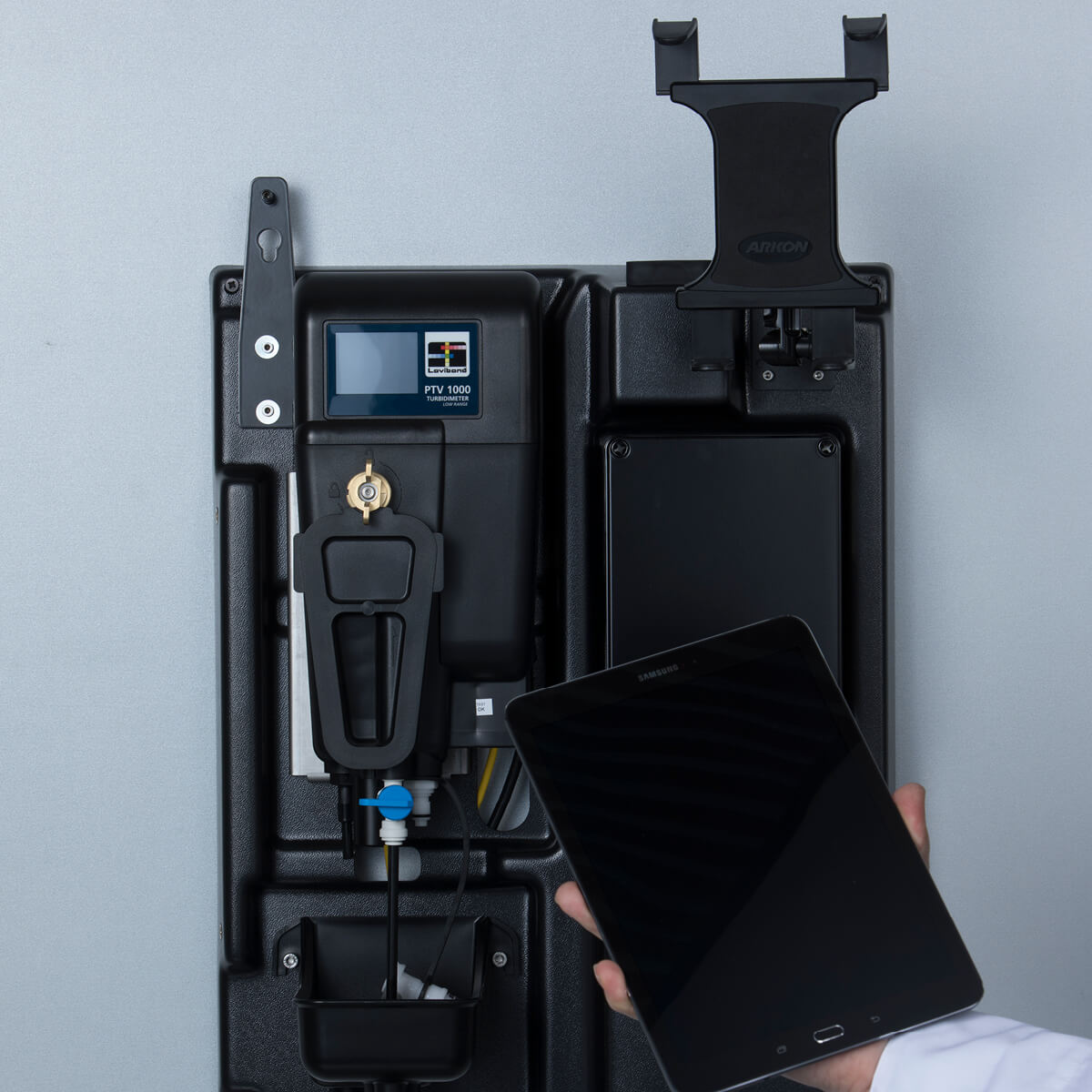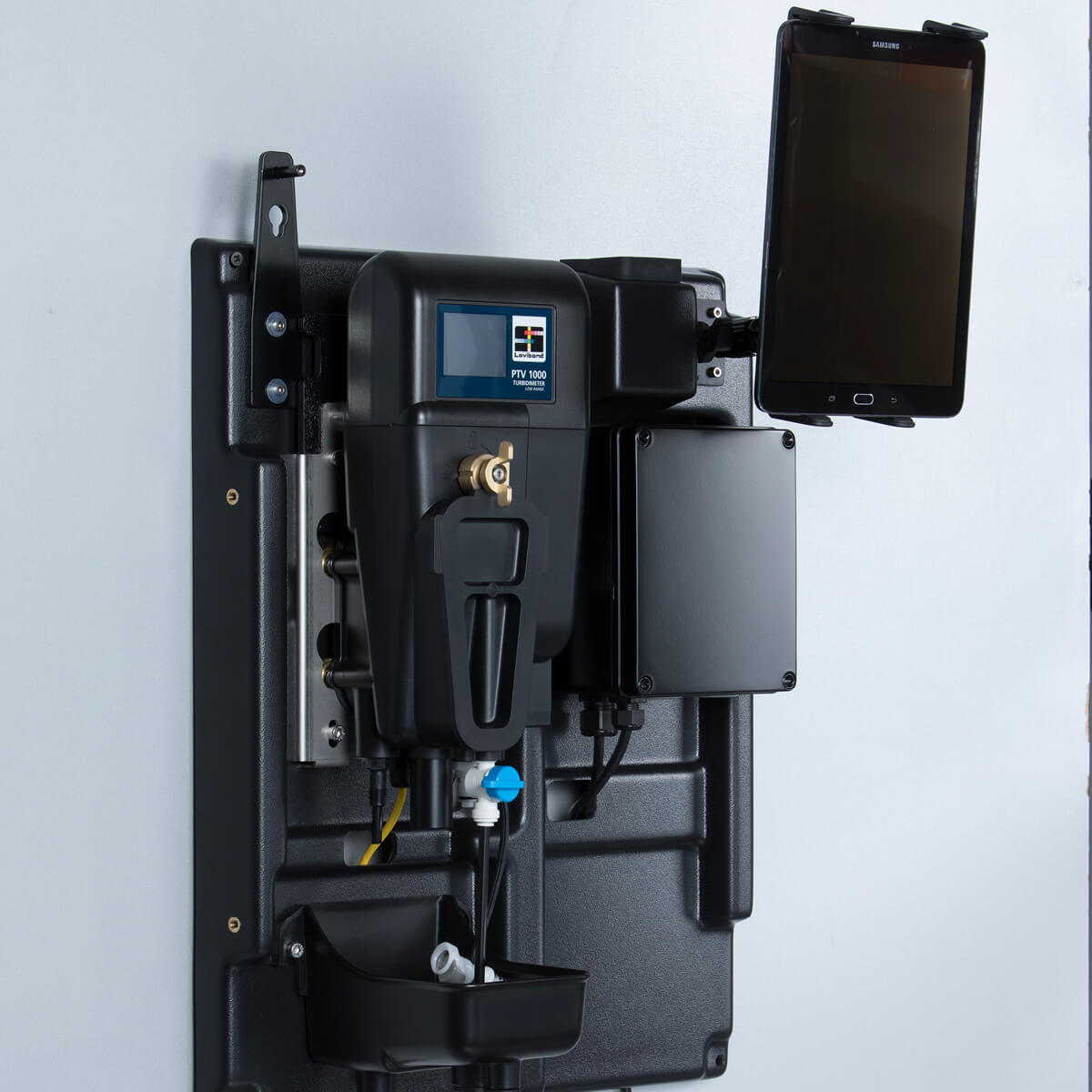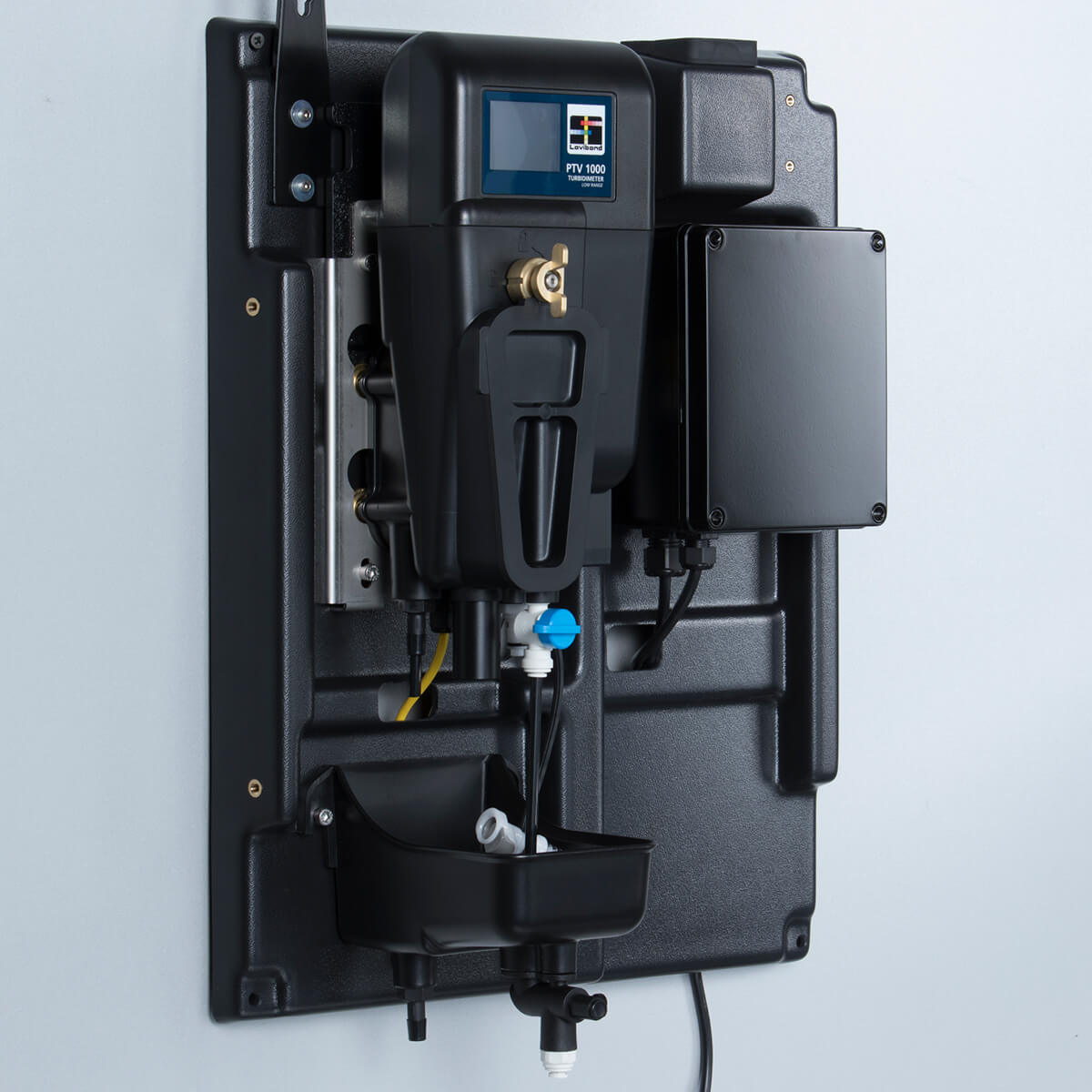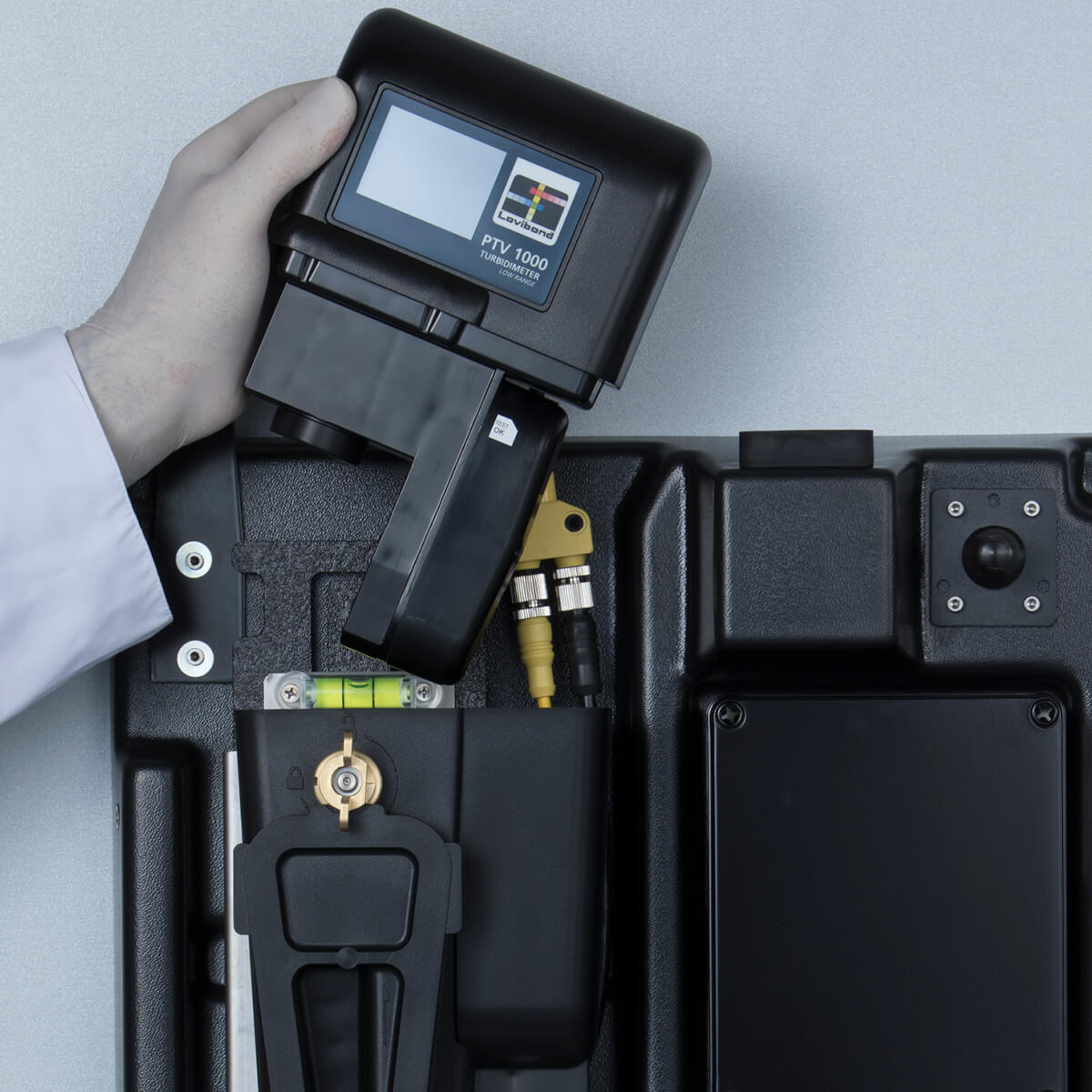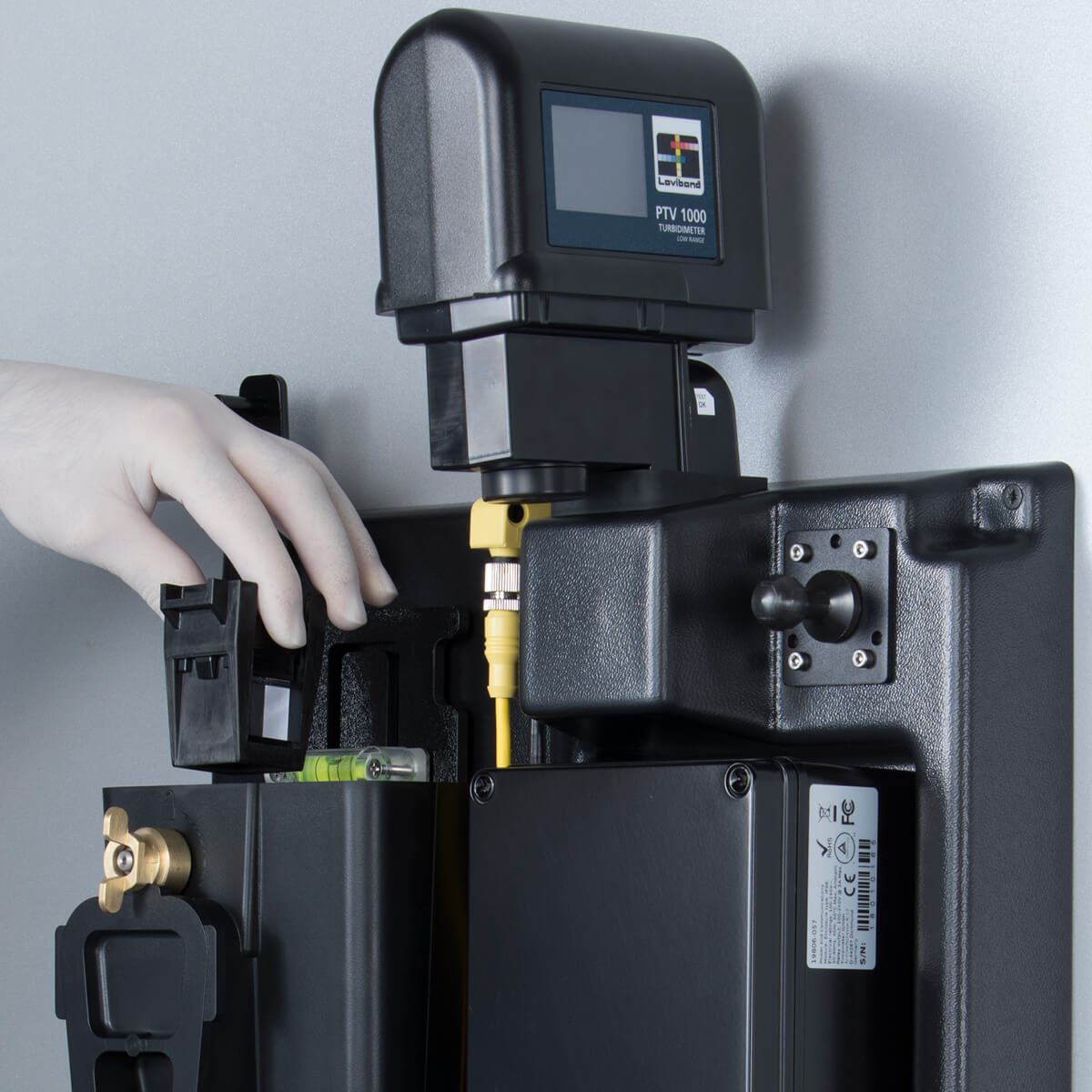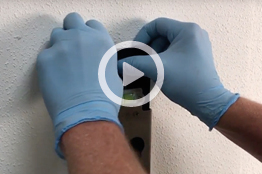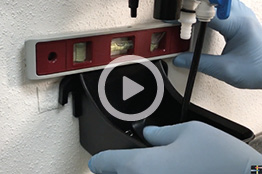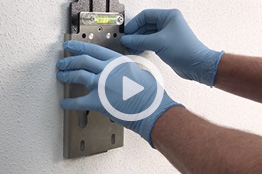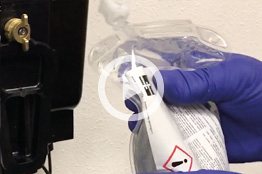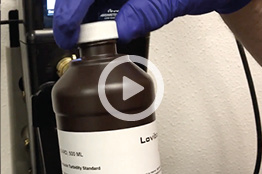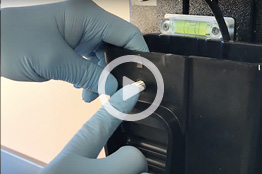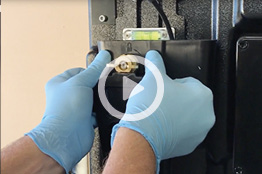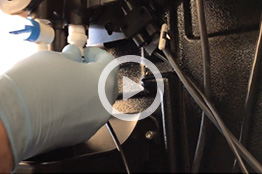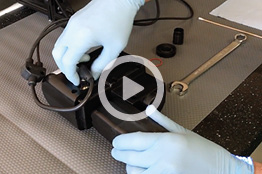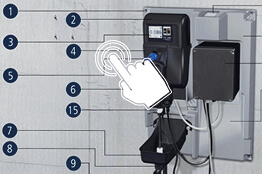PTV1000 Process Turbidimeter with Bluetooth®; IR Light Source, ISO
Process Turbidity Simplified
- Online Turbidimeter for ISO 7027 compliance
- Compatible with AquaLXP mobile app
- Low maintenance design saves operator's time
- Simplified calibration process
Details Matter. The development of the PTV Series considered every aspect of process turbidity workflow - from installation and setup; daily measurement and control; routine procedures such as calibration, verification and maintenance; to data collection and management.
The PTV Series is optimized for monitoring filter effluent in a regulatory environment. By focusing on helping operators manage routine workflows, the instruments deliver an easy to use system with unsurpassed accuracy when monitoring low levels of turbidity.
Every instrument has an integrated touchscreen display, which makes it easy to see current turbidity values and to assess the status of the instrument. Outputs and alarm status are always clearly visible, and can alert operators to an issue.
The flow body is easy to clean - there are no “nooks and crannies” where particles can settle. The body can be easily drained for cleanings or calibrations with quick-connect fixtures and collecting a grab sample for verification does not require the operator to disconnect tubing to access the sample. The low volume flow body allows changes in turbidity levels to be seen faster than competitive instruments.
All models feature a solid state light source which means there are no bulbs to change over the life of the instrument. The optical design has eliminated the chance for condensation and fogging, without the use of desiccants, and there is no risk of fouling the optical system with the presence of iron and manganese.
The PTV Series also makes it easier than ever to access and analyze data. Every logged reading, calibration and verification associated with a measurement module over its lifetime is stored locally, ensuring proof of routine data is never deleted or unavailable. Operators are able to access the information directly from the instrument, so there is no need to locate maintenance logs or pull the data from a SCADA system.
Part Number 6125684
Applications
- Drinking Water Treatment
Product information
The PTV1000 Process Turbidimeter is optimized for monitoring filter effluent in a regulatory environment. White Light and IR LED light sources are available.
The instruments are designed to consider every aspect of an operators’ work flow with an emphasis on simplicity and accuracy.
| Optics | Infrared light |
| Accuracy | ± 2 % of reading from 0 to 10 NTU ± 4 % of reading between 10 to 100 NTU |
| Display | Touchscreen |
| Interfaces | Bluetooth |
| Stray Light | smaller 0.005 / 5 mNTU |
| Displayed Resolution | up to 0.0001 NTU (range dependent) or 5 digits displayed |
| Repeatability / Precision | better than 1% at 1 NTU |
| Initial Response | 10 % change: 15 seconds @ max flow |
| Step Response | (T-90), less than 240 seconds at 200 ml/min. at 1 NTU |
| Signal Averaging | User Selectable: 1, 3, 6, 10, 30, 60, and 90 seconds, defaulted to 30 seconds |
| Sample Temperature | 0 - 50 °C (32 to 122 °F) max sample temperature: 70 °C (158 °F) |
| Sample Flow | 30 to 500 ml/min, optimal flow: 50 to 80 ml/min |
| Sample Inlet Connection | 1/4-inch NPT female, 1/4-inch compression fitting tubing (included) |
| Sample Outlet (Drain) Connection | 3/8-inch NPT female, 3/8-inch hose barb tubing (included) |
| Power Requirements | 90 to 264 VAC, 50/60 Hz. Auto Select |
| Sample Inlet Tubing | 1/4-inch OD or 6 mm OD |
| Sample Oulet Tubing | 3/8-inch OD or 9 mm OD |
| Turbidimeter Body Drain | Quick connect with integrated check valve |
| Calibration | One Point Calibration at 5.0 or 20 NTU with any regulatory approved formazin |
| Analog Output: Measurement Module | 1 selectable 0 - 20 mA or 4 - 20 mA; output span programmable over any portion of the measurement range |
| Analog Output: Junction Box | 1 selectable 0 - 20 mA or 4 - 20 mA; output span programmable over any portion of the measurement range |
| Alarms | Three set-point alarms, each equipped with an SPDT relay with unpowered contacts rated 5 A resistive load at 230 V, AC |
| Digital protocol | 4-20 mA |
| Enclosure Type: Junction Box | Fiber reinforced polyester |
| Enclosure Rating: Junction Box | IP 66 |
| Safety | Listed by TÜV Rheinland to UL 61010A-1: Certified by TÜV Rheinland to CSAC22.2 No. 1010.1: CE Certified by TÜV Rheinland to EN 61010-1 |
| Immunity | CE certified by TÜV Rheinland to EN 61326 (Industrial Levels) |
| Mounting Hardware | Turbidimeter Sensor - Slotted Mounting Bracket that can be affixed to any vertical surface or panel (Optional). Junction Box - Direct mounting to any vertical surface or panel (Optional) |
| Method of Verification | Wet Standards or dry verification device |
| Limit of Determination | 0.0005 NTU |
| Limit of Detection | 0.005 NTU |
| Flow Indicator | no |
| Portability | Process |
| Environmental Conditions | 5 - 50 °C (41 to 122 °F), rel. humidity 5 - 95 % (Non-condensing) |
| Stock Conditions | -40 - 60 °C (-40 - 140 °F) |
| Compliance | ISO 7027 |
| Dimensions | 158.4 x 340.4 x 334.5 mm |
| Testparameter | Measuring Range | Method No. | |
|---|---|---|---|
| Turbidity | 0.0001 - 100 NTU |
Bluetooth® is a wireless technology subject to regional approval. The use of Lovibond® instruments with Bluetooth® technology is currently only allowed in certain regions of the world. The use of the instruments will also be possible in other regions in the future. For current regions and further information, click here
